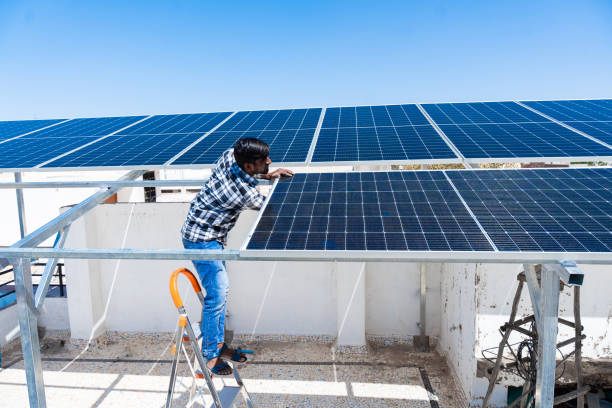
PANAJI
In major Indian cities, the increasing use of solar electricity is slowly reshaping homeowners' lifestyles in a positive way. In a small State like Goa, too, individual households and housing complexes are adopting rooftop solar solutions and transitioning towards clean energy.
Though at a snail’s pace, the State has witnessed a notable surge in rooftop solar installations with the production of 53MW of green energy to date—more than 90 per cent of the state’s total solar power generation, which stands at 58MW. Currently, around 400 to 500 consumers have installed rooftops under the PM Surya Ghar: Muft Bijli Yojana, while close to 4,000 applications are under scrutiny.
Cost savings drive solar adoption
Homeowners claim that, with escalating electricity prices, solar rooftops are becoming more viable. In Goa, which enjoys abundant sunlight for much of the year, deploying solar rooftops is the best solution to save on electricity expenses.
A Taleigao resident, Varad, gave a first-hand account of the motivation behind his family’s decision to go solar. He explained that, having noticed a surge in their monthly electricity bill by almost Rs 1,000 (and higher during the summer season) due to rising annual tariffs, his family decided to explore solar solutions.
“Since installation in April 2024, until April 2025, we have saved around Rs 48,000 to Rs 50,000 on electricity costs. To date, our solar panel has produced close to nine units of solar power, of which almost 20 per cent has gone to the grid,” he explained, further informing that the total cost of solar rooftop installation was just above Rs 4 lakh.
Varad claims that the installation cost will be recovered in another three to four years. “We have already received a central subsidy of Rs 80,000; however, there is a substantial delay on the part of the State subsidy. This is the only thing that has let us down,” he said.
A viable solution to high electricity costs
Like Varad, Richard from Housing Colony, Margao, has installed a 3kW rooftop solar system for roughly around Rs 2 lakh and is looking to recover the investment in the coming two years. “I installed the facility in September last year. To date, the total saving has been Rs 25,000 on the power bill. This is a great relief,” he said while confirming that he too is yet to receive the State share of the subsidy, while the central subsidy of around Rs 30,000 has already been availed.
Richard, a retired government servant, said, “We have practically eliminated fuel costs. Introducing electric induction cooking has cut our gas expenses, though not fully. However, we will transition into it fully soon.”
Dismissing high maintenance costs, Richard advises those considering rooftop solar to consult professionals and compare quotes from different vendors.
Efficient and affordable solar panels for homes
According to the vendors empanelled with the Goa Energy Development Agency (GEDA), rooftop solar panels for homes available today in the market are more efficient and affordable than before and have low maintenance.
With this kind of innovation, the use of new solar panels can yield more power even in weak light. They are also intended to be corrosion-resistant and perform well after long periods of use. The vendors said that installing rooftop solar panels for homes involves meticulous assessment and planning, where roof suitability, size, and orientation are evaluated.
The financial benefits of solar energy
A banker from Caranzalem-Panaji, Kalpana, underscored the tangible benefits and considerable cost advantages of this renewable energy transformation.
“The annual rise in power tariffs is something that you cannot ignore. In a joint family of six, we have a number of electrical appliances including four air conditioners, seven to eight fans, two fridges, a microwave, washing machine, electric car, and bike. The electricity consumption is too high, with the monthly power bill soaring up to Rs 6,000,” she said.
With the introduction of solar power, she explains, they have not only managed to have zero billing or sometimes negative billing, but the net metering policy allows excess power to be sold back to the grid. “I appeal to people to opt for this green energy, which is the way forward,” she said.
PROS
CONS